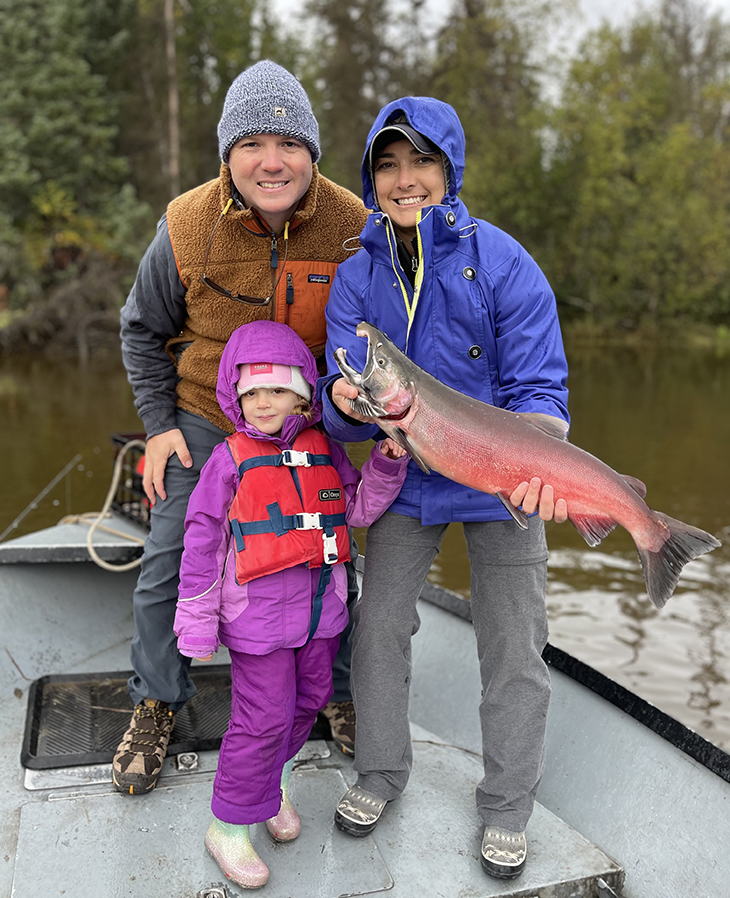
Med student spends time in Alaska as part of tribal medicine training
Wednesday, November 16, 2022
Media Contact: Sara Plummer | Communications Coordinator | 918-561-1282 | sara.plummer@okstate.edu
For medical student Ashton Glover Gatewood, spending time in Wasilla, Alaska, treating patients and learning from physicians at the Benteh Nuutah Valley Native Primary Care Center was both quite similar and very different to her time in tribal health facilities in Oklahoma.
Gatewood — a member of the Choctaw Nation and a descendant of Cherokee and Chickasaw ancestors — is a third-year medical student at OSU College of Osteopathic Medicine at the Cherokee Nation in Tahlequah, and part of the first cohort of Tribal Medical Track students.
“One of the best aspects of doing the Tribal Medical Track is learning from different tribal facilities. There is so much that we have in common but also differences between our nations,” Gatewood said. “It’s been fun hearing stories of dip net fishing, gold mining and moose hunting in Alaska and trout fishing, deer hunting and stomp dancing in Oklahoma. One overarching theme is the love that we share for our communities and hope for the future of health and wellness in Indian Country.”
The goal of the Tribal Medical Track is to prepare students for successful matriculation into tribal communities and health systems in an effort to improve the primary care physician workforce shortages faced by tribal health care systems, said Lori Boyd, director of clinical education at OSU Center for Health Sciences. Currently there are 20 second- and third-year OSU medical students enrolled in the TMT.
“One of the best aspects of doing the Tribal Medical Track is learning from different
tribal facilities. There is so much that we have in common but also differences between
our nations.”
As part of the TMT, students are required to complete a portion of their rotations at tribal health facilities, which don’t have to all be located in Oklahoma.
Gatewood said the Alaska Family Medicine Residency Program is a highly regarded program for rural, tribal and wilderness medicine.
“Since I have family in Palmer, Alaska, I thought this was a great opportunity to visit with family, obtain incredible training and travel to a site that has long been a professional and personal bucket list item,” she said.

The health care center in Wasilla serves all American Indian and Alaska Natives who are enrolled in a federally recognized tribe, and Gatewood was able to work with family medicine physicians, pediatricians and other specialty providers. She also learned about a different way of life and value system.
“The Alaskan lifestyle was very connected to the land, family and often even subsistence based. Because of the rural and even remote nature of the communities, they valued self-sufficiency, the outdoors and harvesting food from the land,” she said. “This way of viewing life is inspiring me to make more healthful diet and exercise decisions and shift priorities from a more materialistic and rat-race mindset to one that focuses on family and well-being.”
Boyd said Gatewood is a capable and goal-driven student with a bright future who wants to improve the health and lives of those in her community. Through this rotation in Alaska she has broadened her experiences and stepped out of her comfort zone.
“I was very excited for Ashton and pleased to know that she expanded her learning of tribal medicine through an experience with tribal populations in Alaska,” she said. “The Tribal Medical Track at OSU is garnering attention across the nation, and as our students continue to pursue unique, out-of-state learning experiences like Ashton has, the way is being paved for future TMT student to do the same.”
